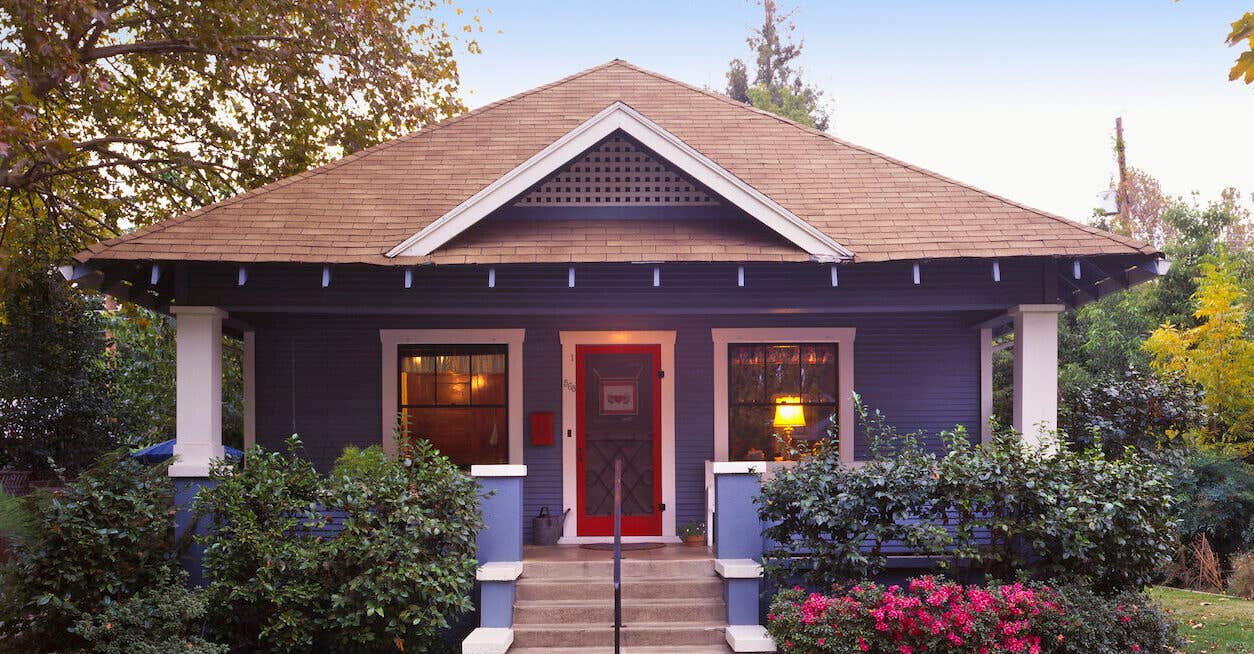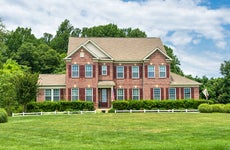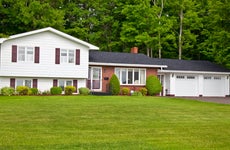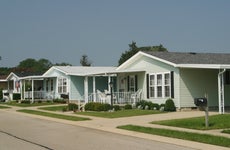What is a Craftsman-style house?

The Bankrate promise
At Bankrate we strive to help you make smarter financial decisions. While we adhere to strict , this post may contain references to products from our partners. Here's an explanation for .
You may not recognize the name, but you’d surely recognize the look: a simple but solid-looking, square home, with steps leading up to a covered front porch and beams supporting a V-shaped roof. The Craftsman-style house can be found all across the country, with a particularly large presence in the West and Midwest — and it remains as popular today as it did when it originated over a century ago.
Let’s explore this quintessential American-as-apple-pie home style, including its history, characteristics and cost, in more detail.
What’s the history of Craftsman style?
Although the Craftsman style was born in the U.S, it was inspired by the British Arts and Crafts movement of the late 19th century. Arts and Crafts advocates and designers, like John Ruskin and William Morris, wanted to move away from the mass-produced, machine-made goods born of the Industrial Revolution, choosing to champion high-quality craftsmanship and artistry instead. They also rejected fussy, detail-laden Victorian styles, in favor of a simpler, functional aesthetic.
Among their followers across the Atlantic Ocean was American furniture designer Gustav Stickley, who in 1901 began publishing a magazine called The Craftsman, which spotlighted the Arts and Crafts movement and practical applications of its principles. The magazine published articles showing readers how to construct their own furniture, handicrafts and houses – simple, airy one- or two-story structures, featuring an open, light-filled interior, that were built in harmony with their landscape and preferably of local materials. It established “The Craftsman Homebuilders Club,”’ whose members could receive free blueprints, specifications and even kits for homes, which came to be called “Craftsman”-style in homage to Stickley’s publication.
Meanwhile, other architects and designers were developing designs in a similar vein — in particular, Pasadena-based Charles and Henry Greene, two brothers who popularized bungalow homes. Thanks to the work of the Greenes, California was one of the places where the Craftsman style initially flourished. Today, several of their homes are still in use, including the National Register of Historic Places-listed Gamble House in Pasadena.
The heyday of the Craftsman style ran from the early 1900s to the late 1930s. Though it never ceased completely, other styles began to supplant it in the suburbs of post-World War II America.
What characterizes Craftsman style?
There are a number of commonalities that give Craftsman houses their signature look – both on the outside and inside.
“The intent of Craftsman homes was to create a connection between people, their home and nature, so it’s common to see features that contribute to that purpose,” says Shaun Larson, a real estate broker at PARKS Real Estate, based in Brentwood, Tenn. “The interiors and exteriors both have materials that are natural and full of texture, and they are exposed to become part of the home’s finishes rather than hidden with purposeful finish materials.”
External features
Although they can look slightly different from house to house, one of the most notable characteristics of a Craftsman is a low-slung, gabled roof with exposed rafters or beams. Sitting underneath the roof, you’ll find a covered porch.
“Front porches are considered to be a signature component of Craftsman homes,” says Jeff Tricoli, a Palm Beach County, Fla.-based realtor with Keller Williams. “They can come in the form of a wrap-around porch or a small, covered patio that leads up to the entry door of your house.”
Craftsman-style properties also tend to feature earth-tone exteriors in materials like brick, stucco and painted wooden siding, says Tricoli. These bring a natural, down-to-earth aesthetic to the homes.
Finally, these types of houses include supportive columns that are generally narrower at the top and wider at the bottom. In most cases, they’re square-shaped rather than round.
Internal features
While the exterior features are the most characteristic, Craftsman style also features in certain elements inside the home.
For example, Craftsman floor plans are usually designed for function, with open, arched entrances between the various rooms that create a pleasant flow. All of the interior living spaces in a Craftsman house are conducive to cozy living and connection, says Larson. Fireplaces are a common feature.
Craftsman-style house interiors also tend to be built of natural materials, like wood and stone. Many times, these features and fixtures are handcrafted as a reflection of the ideals of the Arts and Crafts movement. However, by modern standards, the predominance of wood and the fairly small rooms can make Craftsman houses feel dark, despite the often-ample presence of large bay windows.
Different types of Craftsman homes
Although they share certain characteristics, there are actually several different types of Craftsmans. The four most prominent are:
Bungalow
These are the original Craftsman homes, typically designed with a low-pitched roof, double-hung windows, and tapered columns that are thicker at the base. Bungalow Craftsman houses are usually single-story structures and became popular in Southern California in the early 1900s.
Prairie
Originally designed by Frank Lloyd Wright, Prairie-style Craftsman homes have a low profile, with spacious floor plans and noticeable horizontal lines. These kinds of Craftsmans are most often found in the Midwest, and their design is meant to emulate and blend into the wide-open plains in that region (hence the name).
Mission Revival
Teeming with Spanish and Mediterranean influences, these Craftsmans often incorporate mission-style touches and are built of stucco, terracotta, and red tile — following the Arts and Crafts mantra of using local materials. Like the Bungalow Craftsman, they’re most popular in the Golden State but can also be found in Florida, Texas and the Southwest.
Four Square
Four Square Craftsman-style homes are a larger version of original Craftsmans, which tended to be modest, single-story residences. They typically feature four rooms on the first floor, and four rooms on the second (hence the name). Found all across the country, these boxy two- or two–and-half story properties do feature many of the same traditional characteristics, though, including columns and low-incline roofs.
What do Craftsman houses cost?
The cost of a Craftsman house depends on several factors, including location, size, and condition. In more affordable areas like the Midwest and the South, you can find one-story Craftsmans for sale for about $300,000 and up. However, prices increase dramatically if you’re looking for a larger, multi-story home or if you live near a major city, where Craftsmans routinely sell for over $1 million. In Virginia, where it’s the most valuable home style, an average Craftsman can cost just over $900,000.
That may seem expensive relative to their size or lot acreage, but remember many Craftsmen houses are 100 years old (if not older), putting them into historic home territory. They may even be the work of a noted architect. So you might be paying a premium for their pedigree.
Not interested in buying a vintage Craftsman? You can also build your own. Again, the costs will vary quite a bit depending on where you live, the materials you choose, the size of your new home, and how dedicated you want to be in recreating the high-quality craftsmanship and unique touches.
On average, the cost of building a 2,000-sq.-ft. new home in the United States is just over $280,000, according to HomeAdvisor; the average cost to build a similarly sized Craftsman-style home is between $300,000 and $325,000, the real estate agent-search site Clever estimates. If you go with a more modest 1,500 sq.ft bungalow with a partial second story — similar to the original models Stickney envisioned—the average price runs to $187,500, according to Fixr.com.
Final word on Craftsman-style houses
A staple of American architecture, the Craftsman house can be found in all corners of the country, in a number of different variations and price points. Practical and adaptable, it’s been perennially popular for well over a century, a quintessential middle-class neighborhood dwelling.
However, if you’re thinking about buying one of these types of homes, it’s important to think beyond their charming curb appeal and consider the special maintenance that may be required due to their age. If you build one, bear in mind that it could cost more than a contemporary style, especially if you want to give it the same loving attention to detail, material and craftsmanship.
Related Articles



